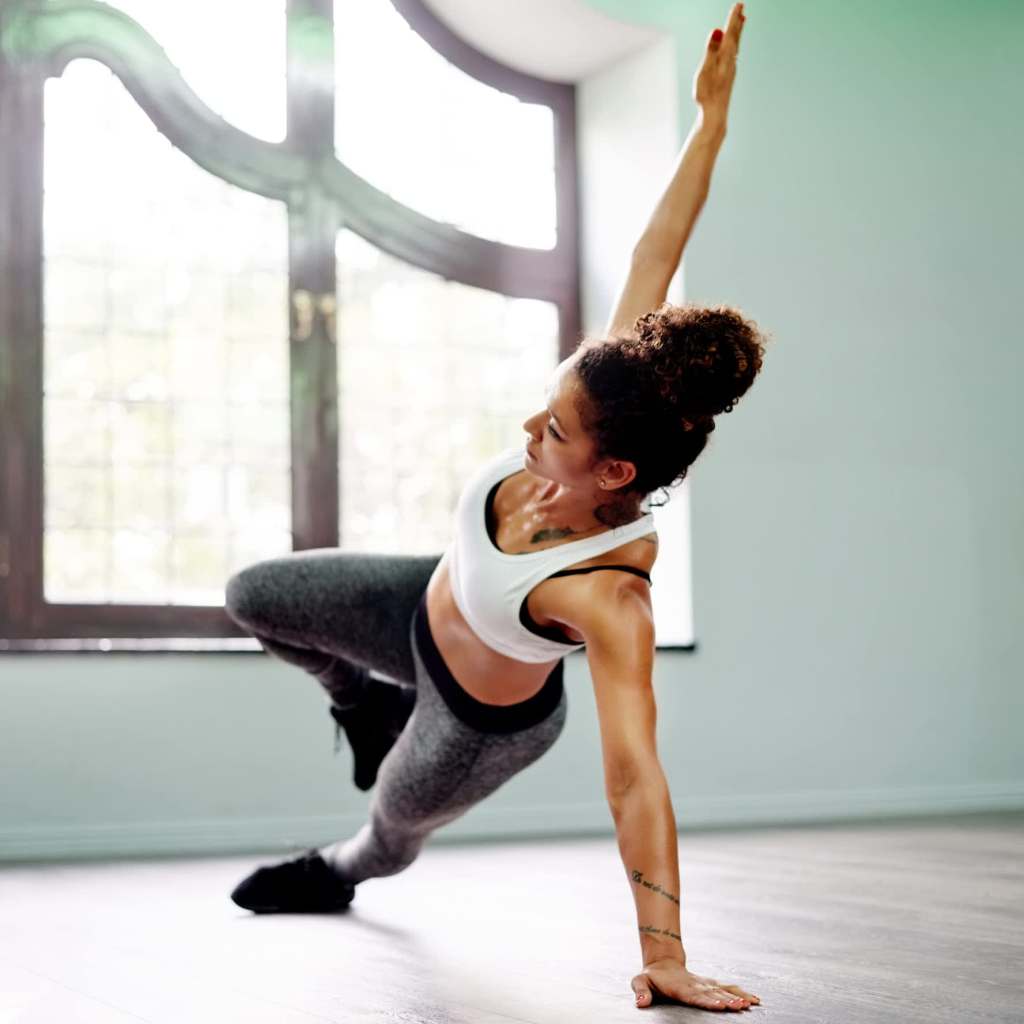I know the ideal temperature for sleep is somewhere in that sweet 60-67 degree range, but is there a thermostat best practice for at-home workouts, too?
It’s a question I’ve been asking myself (while drenched in sweat) after finishing up strength-training and HIIT sessions in my bedroom. I go to extreme lengths to move around my furniture in order to do a burpee without breaking a lamp, but I had never once thought about the best temperature for working out at home.
For guidance, I turned to Jenna Langhans, an NASM-certified personal trainer at NYSC Labs.
While Langhans says there are “varying opinions and theories as to what temperature ranges are safe for working out,” the temperature you choose will likely depend on the length and type of exercise you are doing.
Take yoga, Pilates, or another low-impact exercise for example – Langhans says that somewhere between 68-74 degrees might be a good selection. However, if you’re foam rolling, meditating, or practicing breath work, temperatures in the 80s might also be fitting.
“If you’re doing a higher impact workout – such as strength training, HIIT, dance cardio, kickboxing, or heavy lifting – you could turn the temperature down slightly (64-68 degrees) to avoid feeling overheated, lightheaded, or uncomfortable,” she adds.
Related: Want to Start Working Out, but Don’t Know What to Do? These 10 At-Home Tips Can Help
Therefore, because it’s really dependent on the workout method, Langhans says a safe temperature range could be as wide as 55-104 degrees. “You wouldn’t want to do a HIIT workout in 104 heat, but some yoga classes are done in rooms that warm,” she explains.
Before working out in any extreme temperature or temperature outside a comfortable range, though, Langhans suggests consulting with a doctor first. “This is especially true for those who are pregnant, have previous health concerns, are taking medications, or those who are not used to physical activity,” she adds.
Related: You Don’t Need a Gym to Exercise, but Follow These Expert Tips to Make Home Workouts Safer
Considering most of us don’t have a hot yoga studio at home, for at-home workouts, Langhans says a good rule of thumb is to keep your thermostat around 68 degrees.
“If you feel super cold or super warm before your workout (when you’re just standing – not moving), you might want to adjust your thermostat to a more neutral temperature,” she adds.
Another tip is to dress in layers – keep a sweatshirt on if you’re chilly during warmup, for example.
If you cannot regulate the temperature where you are and you’re too warm, Langhans suggests modifying the workout to avoid dizziness, dehydration, or feeling overheated.
“A few tips would be: take the plyo out of the workout, drink plenty of water, take enough breaks, or go outside to get fresh air when needed,” she explains. “This may prolong your workout, but you will probably feel better during and after.”
Click here for more health and wellness stories, tips, and news.

